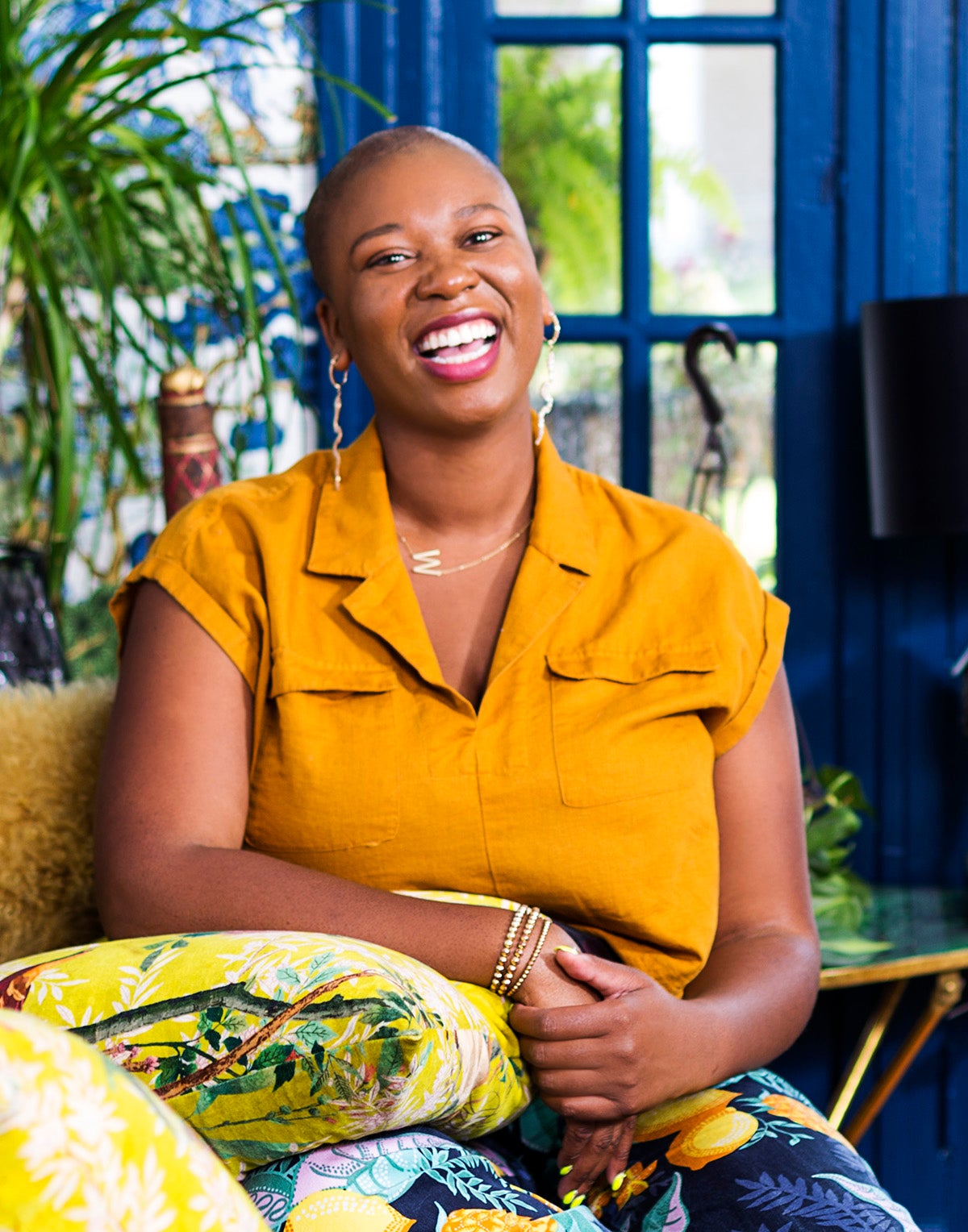In Ask an Influencer, Business of Home explores the creator economy. This week, we spoke with Whitney Jones, the New Orleans–based designer who has developed an ironclad approach to protecting her peace on social media.
For a long time, the interior design profession seemed like a distant, out-of-reach dream for Whitney Jones. Even though well-decorated spaces were a cornerstone of the New Orleans–based designer’s youth—something she noticed in childhood bedrooms and later cultivated in dorm rooms—design was never an obvious career path. After Hurricane Katrina hit, she abandoned her science-focused college coursework and began selling appliances for Sears and Home Depot, a job that made a career in design feel much closer to reality. But even after she enrolled in an online design school program, she was disheartened again when her postgraduation job applications returned no responses.
Still, Jones knew there was another way in. It was 2012, and designers were just beginning to embrace online forums—if you knew where to look. After traversing the info-sharing groups of old-school designers, the Wild West of Craiglist clients and the new frontier of emerging platforms (from the now-defunct Periscope to the now-ubiquitous Instagram), Jones built a new kind of design business—fueled by a blog that formed the foundation of the 27,000-follower social media presence that anchors her firm today.
Ahead, she shares why a content shift is helping her capture the attention of potential clients, how she’s trading many smaller brand collaborations for fewer larger partnerships, and why she’s not afraid of the block button.
When did you first launch a presence on social media?
When I was finishing up school, I started a blog called Decorating Chronicles of a Cheap Chic as a [class] project—which is so funny because now I am so far from cheap. But that was the start of me dealing with other people’s opinions of my opinions on design. Once I was done with school, I started sending my resume to local firms, and I never got a response. So I decided I was going to start working for myself. I didn’t know what to do or where to start, but I remember studying and joining these LinkedIn groups for interior designers. I used to think, “Oh, my God, these are where the mean, bossy, rich designers are that everybody talks about.” But I learned a lot from these women—the way they talked about their clients, the way they talked about doing business, how they charged. A lot of these women were very wealthy designers who have been doing this for a very long time, and they were very headstrong on being in control of the entire process—which, to be fair, I’m now the same way. But I didn’t feel like they were people that clients were happy to work with. I watched the way they would tell other designers how to act or how to react to a situation: “If that’s not your job, you don’t have to do that,” or “They still have to pay for this.” I knew that I wouldn’t want to be talked to that way. Before I even started in this world, I used to always hear such negative things about people who do this work, and these groups were giving me all of the energy that I’ve always heard about when it comes to interior designers. I’m grateful for the groups because I did learn a lot of great things about the process, but I also learned what not to do by trying to be the opposite of that. I don’t think I would have even had the confidence to start taking on clients and start my business if it wasn’t for reading through those LinkedIn threads and trying so hard to be different.
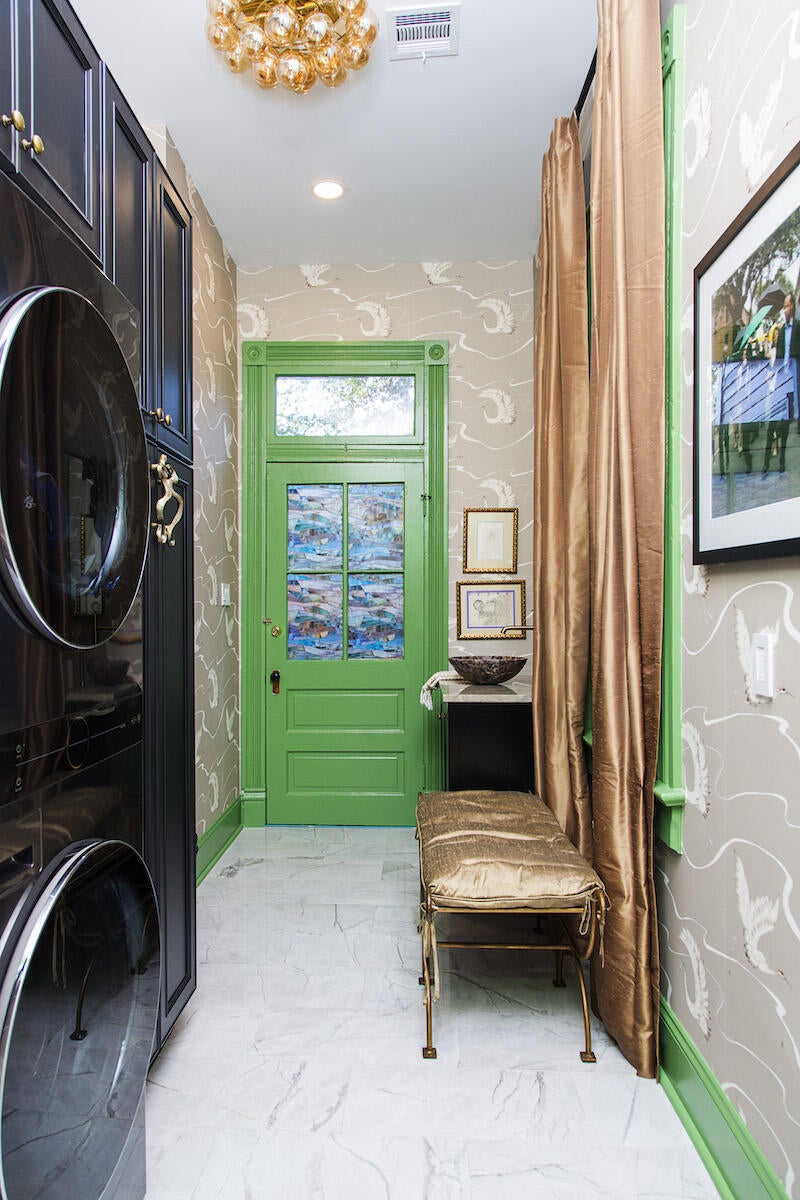
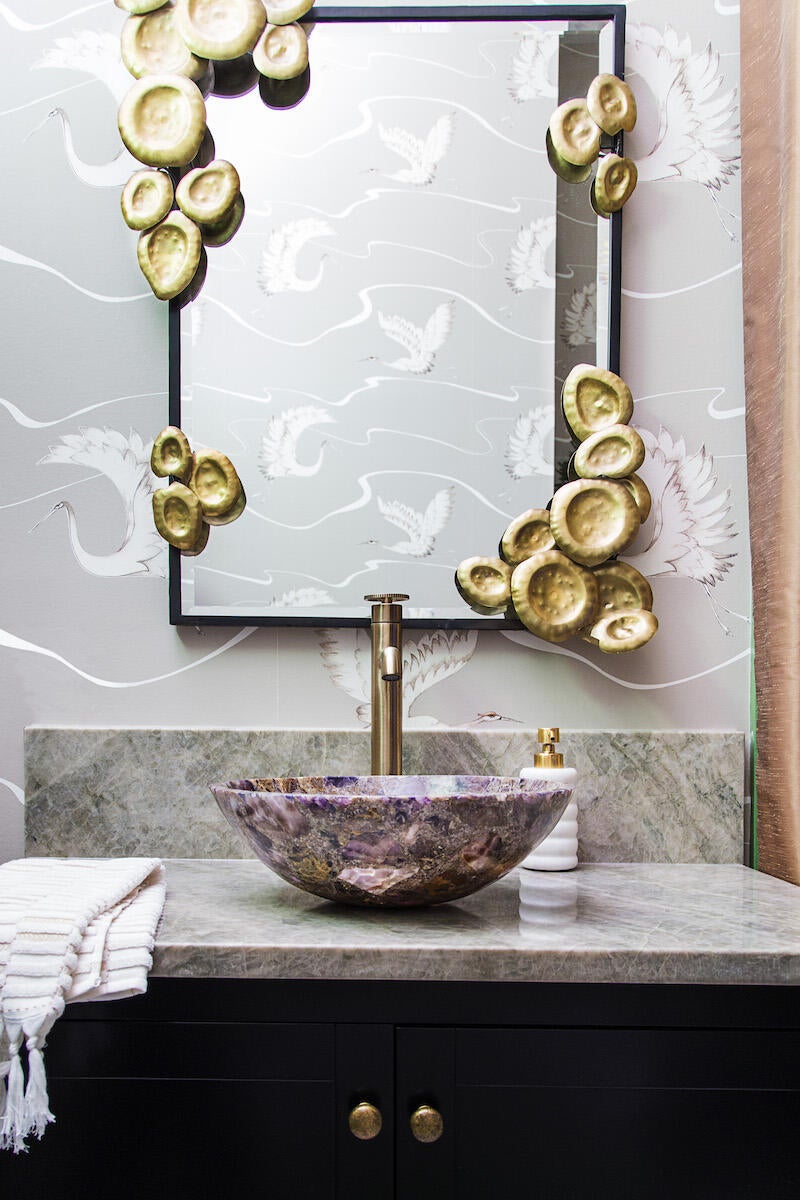
What was your approach?
Instead, I went on Craigslist and posted an ad for $99 a room to decorate. For almost a whole year, I was incredibly busy, but someone paying you $100 to decorate a room isn’t really prepared to spend any money on the budget. There wasn’t a whole lot of finishing, but there was a whole lot of me doing a lot of work to learn the process.
On the other side of it, I was charging so little that I basically was overcorrecting. I was working for $100 a room and doing so much work—basically for free. I was handled so badly by so many clients early on, and a lot of it was because I thought that I shouldn’t stand up for myself, trying to be different from what I thought was so bad about the other designers. But it really taught me early on about putting myself out there. There was no interior designer marketing on Craigslist, so it taught me about putting myself in a place where nobody else is, and marketing myself in a way that nobody else was at the time.
My third or fourth year in business is when I stopped posting on Craigslist and started getting clients from my blog. I used to get a lot of clients who read my blog and wanted to do virtual design, so that was easy for me. That’s also how I got so much experience doing inexpensive design and design boards—I’m so quick with that stuff, I can do a budget project in my sleep. I did virtual projects for companies, for people all across the world. Eventually, I changed the name to just Decorating Chronicles, and then after a while I changed to Whitney J Decor, and that’s been my business name for the last seven years.
How did your content evolve over the years?
I was in school when I started my blog, so I was blogging about things that I wanted to learn about—like fiber content on fabrics and rugs, or educational content about what size rugs you should choose. Then I went on to blog about different kinds of mood boards and how to decorate with different colors. I used to love showing how I used National Geographic magazine for inspiration—I still love pulling images from the magazine and using that for color schemes. So I blogged mostly about educational content and teaching people how to decorate, and then I did two different e-books: a space-planning e-book and a decorating e-book. I also [ran] a four-week decorating workshop online.
I started on a blog platform—I think it was Google’s platform, called Blogger—and I used to be in several different blog groups, like Black bloggers groups and women bloggers groups. That’s how I started getting my viewership, having [that community]—which used to be hundreds and hundreds of people—all read each other’s blogs. It wasn’t just blogging for views or for fun. We were blogging because we wanted to make our blogs a business—that’s been my goal from the beginning. I was very mindful of SEO practices and making sure that my blogs were easily indexed and easily read by Google when people search for certain things. I learned a long time ago that you can go into search engines and figure out what to blog about. I would copy those topics that people had Googled several times throughout the day, and I would take those same terms, keywords or topics, and I would make a whole blog post about that. That’s how my blog grew from the beginning.
When did you venture into other platforms?
I joined Facebook, but then Twitter became my favorite social media platform, and I reached 3,000 followers there. It was around that time that Periscope came about, and that is my absolute favorite platform that has ever come out—I was so sad to see it go. Everything was live video, and there was a map of the world you could zoom into and literally go anywhere that somebody is livestreaming in the world. I was livestreaming my projects, my home, I was doing tutorials, and I would literally go live just to show people how to decorate.
As Periscope started dying out, I started seeing a lot of my friends talking about Instagram. I was like, “I’m not getting on another platform. I spend way too much time on my phone already.” I was one of my last friends to get on Instagram—it wasn’t until 2015 that I started to actually use Instagram seriously to post all my blog content.
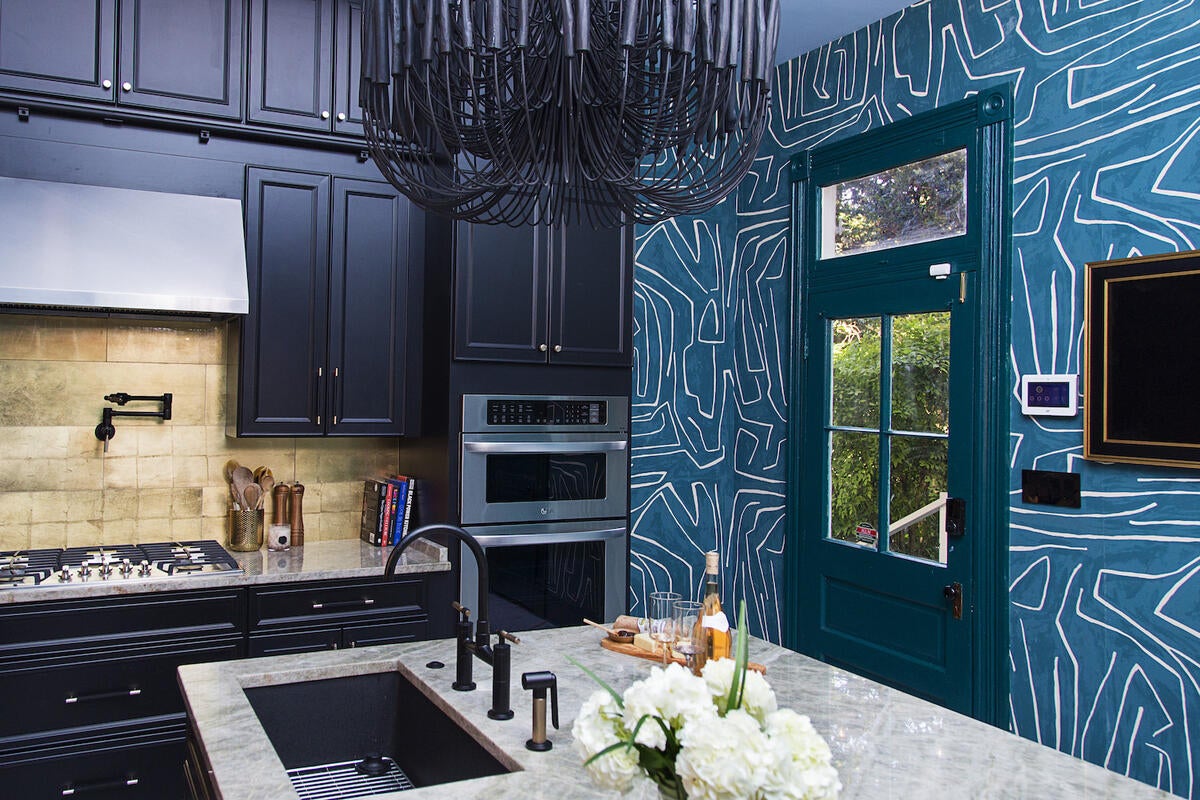
Did your blog audience follow you to other platforms?
I remember clearly saying that not enough of my readers were coming over to Instagram. What I used to hear a lot from them was that they just couldn’t do another platform. Most of them went on Facebook and actively supported me there as well, but I felt like I was starting from scratch on Instagram. Today, there are all these Instagram gurus that tell you how to post, but back then we didn’t have so many Instagram coaches and social media coaches. Back then, it was actual websites that posted research on social media and technology. Buffer, an app you could use to schedule posts, had a really great blog with a lot of information about how and when and what to post. Another one with a great blog was Hootsuite.
From the beginning, I made sure I was being consistent about when I posted. I had a schedule, and every week I would talk about a new topic. From the beginning, on Instagram we were all trying to use smart hashtags so that people could find us. The method that I used back then to grow was to be consistent, to use hashtags and to post quality content—and be active so people know you’re not going to run away once they follow you.
How would you characterize your content?
I try to be unfiltered and focus on what I like. The last maybe year and a half or two, I was starting to post stuff that I thought people I followed wanted to see—other designers and colleagues—but then I realized that I should be posting for people that follow me. I have 27,000 followers, and I only follow 1,000 or so people on Instagram, and if I’m posting and curating content to be facing those 1,000 people, I’m neglecting the other 26,000 people. That’s something that I have changed. When I used to post a reveal, my photographer would give me 60 pictures, and I would only post three of the best ones, because I think these are the best pictures for people who I follow. Then I realized that the people who follow me like all the unfiltered things, the unedited stuff. I noticed that when I post things in my Stories, people really relate to the behind-the-scenes stuff—me actually sitting and drawing my plans, or when I’m in what I call “the lab,” in my office, and I’m just playing around with fabrics and plans and CAD, or messing around with different furniture—a lot of times I’m not even explaining what I’m doing.
I’m not just an influencer; I do design work full-time and take on clients at full scale. My whole point of being on social media is to get clients—to show people what I do so that they can tell their sisters and their moms and their friends who might be interested in hiring a designer.
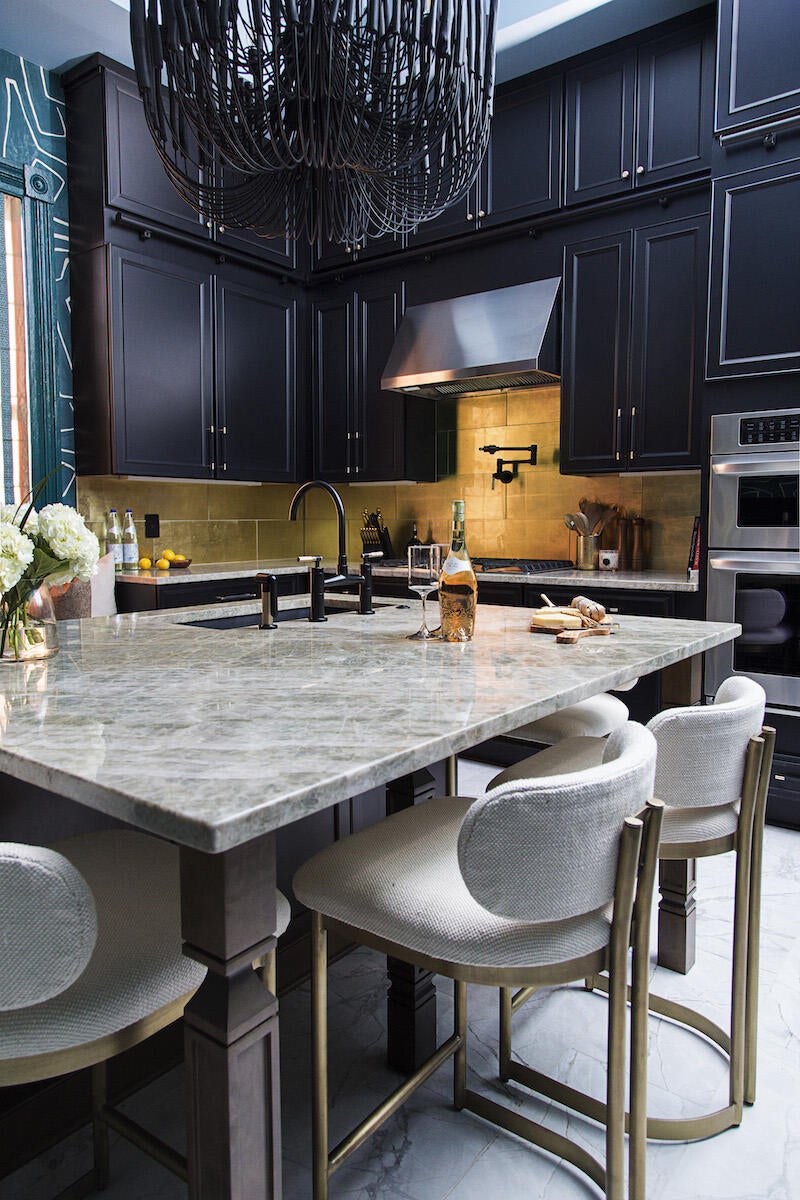

How do you decide how much of your personal life makes it on to your page?
Every now and then, I put this reminder on my Story: Whether it’s our good things or bad things or personal things or sad things—we don’t owe it to anybody. It doesn’t matter how many followers you have, or how much money you make from social media. We do not owe anybody our personal life. You’ll never see the negative things with me—if I post about my relationship, it’s all peaches and cream every day. I’m very mindful of what feels good in the moment. If it feels good, and it’s something that I want to share, then I’ll share, but I don’t think I owe it to social media to be transparent about my personal life. I post what feels good to me and, you know, hopefully the right people get it. If not, then they’re not the right people.
Do you ever encounter trolls or negative attention?
For me, social media is my little bubble that I have complete control over. Those unfollow and block buttons are so easy to use, and they’re mine. It’s my tool that I have the right to use whenever I want. If somebody’s posting content that doesn’t feel good to me, I don’t care who they are, they are unfollowed. And if you’re giving me an opinion when I didn’t ask for it—I have no interest in letting people burst through my bubble. I can’t control a lot of my personal life, a lot of the energy that I’m surrounded with when I’m around clients and family, when I’m in stores, in the gym—I have no control over who comes into my space. But on social media, this is my bubble. If you’re not coming with positive vibes, don’t comment. If you’re not a fan, you don’t have to tell me. I don’t have time to educate you on how you should treat me. I’m one of those designers who, if you want to know something [about my work], I’ll tell you everything—I don’t have any secrets when it comes to the design industry. But I’m very mindful of protecting my peace.
How do you monetize your social media?
I offer Subscriptions on Instagram, so I have a few people that follow me there. I also do brand collaborations, although I haven’t been doing as many within the last year. I’ve been saying no a lot. I used to say yes to everything, but now I’ve been getting very particular about who and what I say yes to. Right now, I’m working on two really big collaborations. I also do sponsored back links if it’s something that I think is relevant to my followers, and something that I actually think is good. But for the most part, right now I’m doing [fewer] larger collaborations versus a lot of smaller ones, because I just don’t have time to do my design business full-time and do smaller sponsored stuff.
How do you negotiate your rates?
When I first started to do brand partnerships, we were giving each other advice on how much to charge in the different blogger groups I was in. Now, I don’t care what other people charge. I don’t think about what a brand wants to pay me. I have in my mind what I want to get paid for the kind of work I’m asked to do, and that’s what I want to get paid. If you don’t want to pay that, then I’m not interested. One of my friends mentioned asking a brand what their budget is, and that’s cool if that works for you, but I already know what I want to get paid, and I don’t mind just putting it out there.
I don’t like the back-and-forth. I’m very blunt about things. When you’re asking me to do a brand collaboration, you’re asking me to stop doing what I’m doing full-time to work on [something else]. I just think of the time involved and how much I’m getting out of it. That’s how I come up with what I want to get paid. I want to make sure that my time is completely taken care of as far as income, then make sure I’m compensated for my creativity in doing something that is helping [the brand] bring in content for their product on their platforms.
How did you feel about the shift to video?
I’m such a flexible person. It’s hard to get me to complain about a lot of stuff. I can only do what I can do and if I can’t do it, maybe it’s for somebody else. I don’t mind change; I’m not scared of change. I will say, when TikTok became a thing, I was not ready for that. I wasn’t interested in it. It didn’t bother me, but I just wasn’t interested in it. And then, when TikTok was growing, I realized my Instagram was slowing down, so then I was like, “Oh, Lord, I have to figure out another platform.” I tried TikTok, but I just don’t have time to sit there and scroll. So I try to post Reels that do really well on Instagram on my TikTok.
What’s the biggest challenge for you on social media right now?
The biggest struggle for me right now is growing my follower count because I’ve found myself staying at 27,000 for a long time, and I don’t know why I’m not pushing past this. I don’t know exactly what to do differently, and I’m not ready to post more. I just don’t have time for it. Right now, I’m seeing that growth is so slow, even though I get pretty good engagement. I have been studying what gets me engagement versus what doesn’t, and I have a formula that I use when I’m trying to promote something or show something new. But I try really hard not to listen to anybody telling me how often or when I should post—I’m really being mindful and posting what feels good to me, because again, this is the only way I can protect my peace on social media.
Social media could be a very dangerous place—it’s why you see so many people who are having a hard time with their mental health and the pressures of being an active influencer on social media, in any industry. I’ve always been very cognizant of making sure that I was not letting social media control me in any way. I have thousands of pictures from vacation that I’ve never posted because I want my time to be mine. I have a lot to give, but sometimes I just don’t have the energy to give, and I have the right to discern when and how I want to post things. My business, my job—that’s my art, that’s my creative spirit, and I’m very sensitive to that.
Homepage image: Whitney Jones | Britt Smith Photography
















